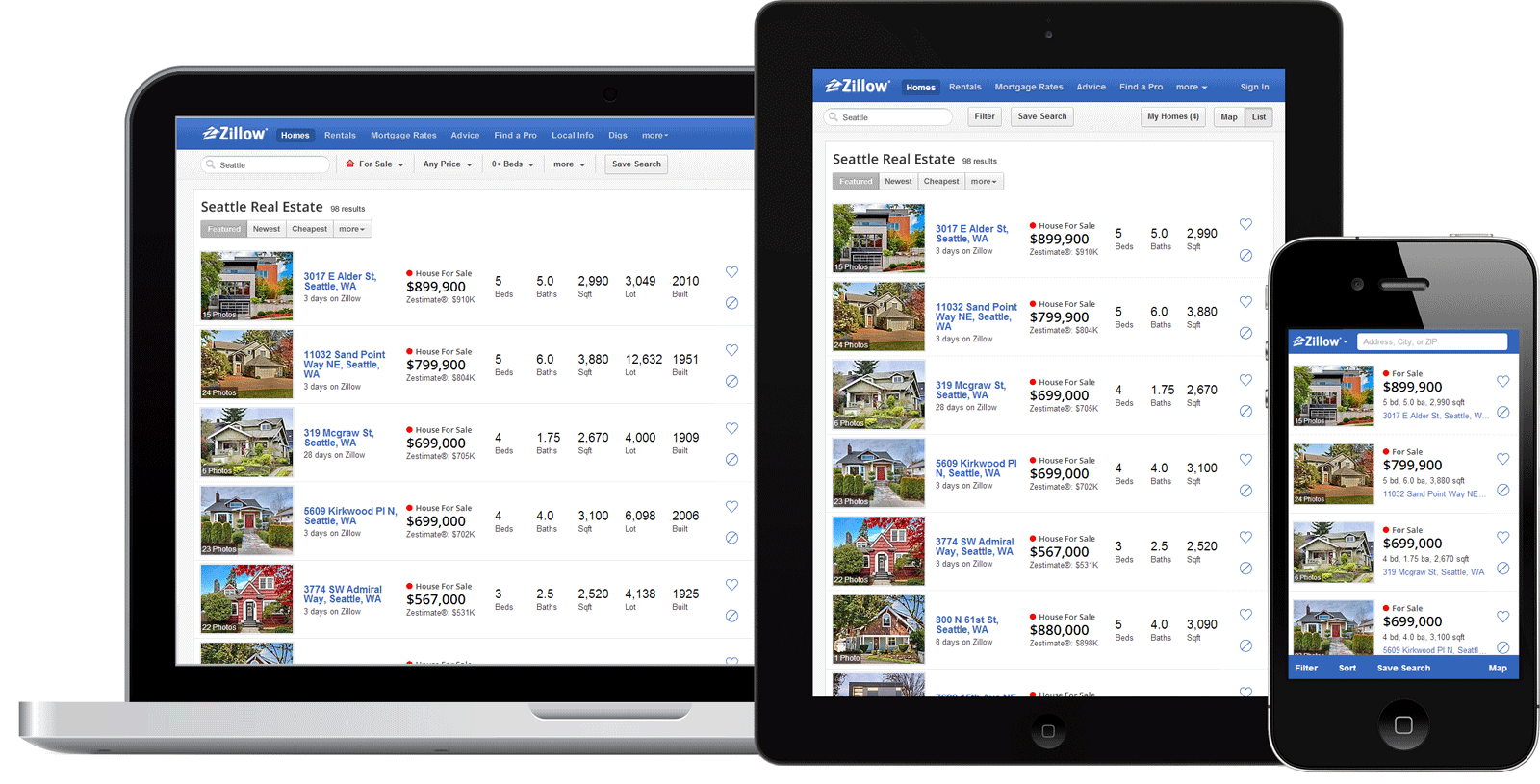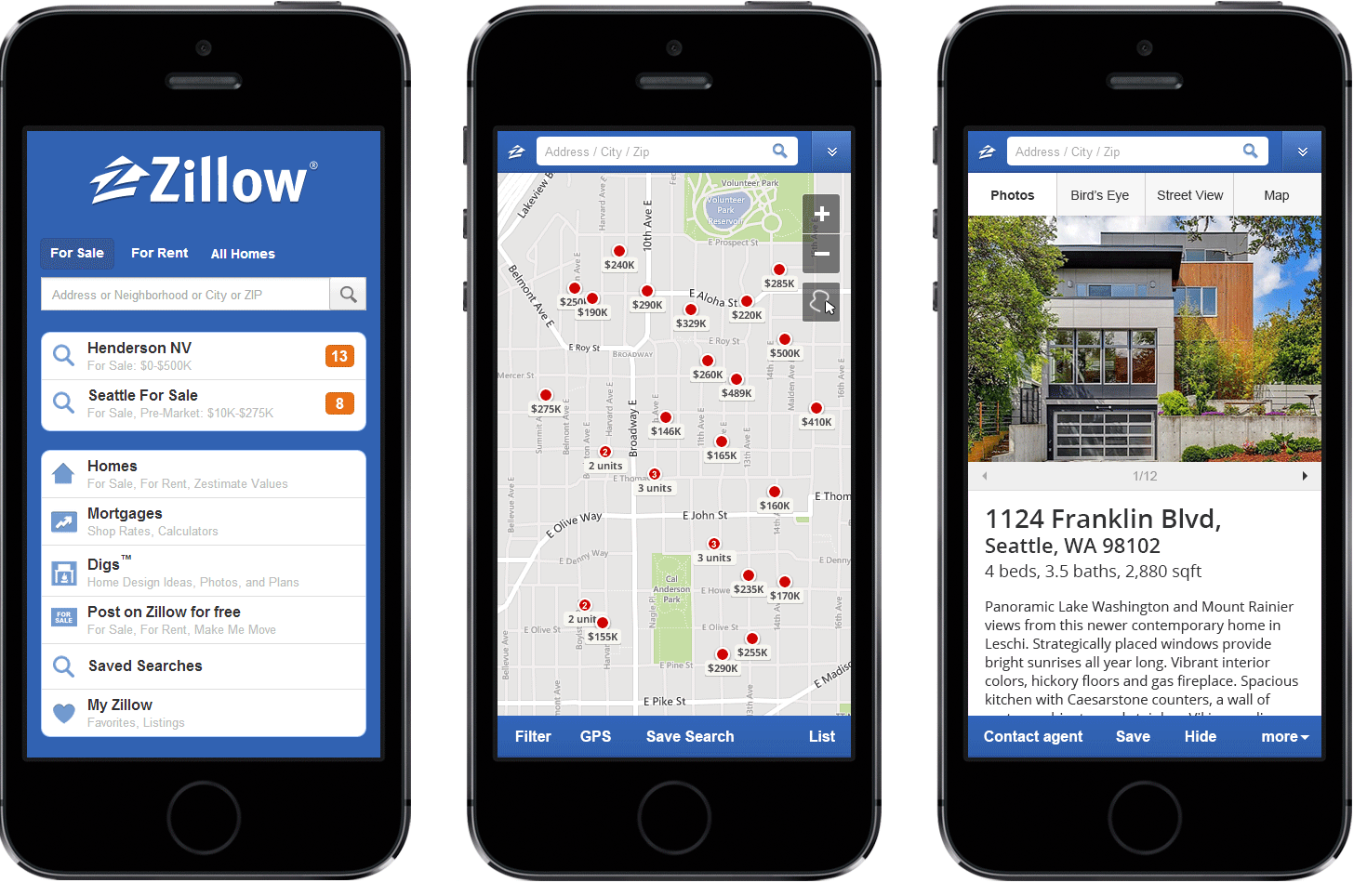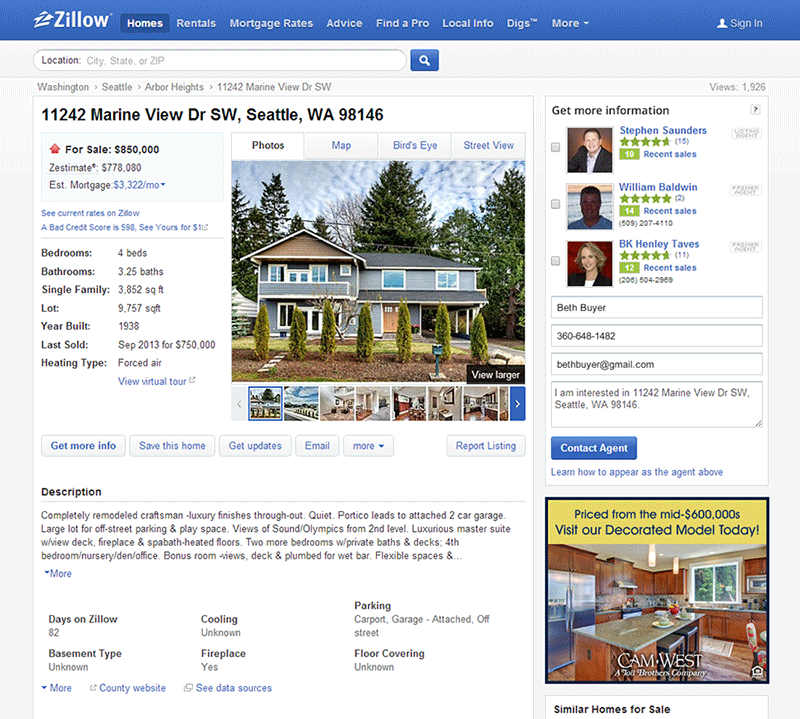
Real estate shopping is what I like to call a "big, hairy problem." It's a complex, emotional adventure for home shoppers. Our goal at Zillow was to appeal to both the head and the heart, combining deep research and financial information with an intuitive, delightful, user-focused experience.
Zillow is a data-driven culture and research & testing informed many of our decisions. We used surveys, focus groups, usability testing (both remote and in-person), A/B testing, and other tools to learn from our users and incorporate those findings into better ways to help them on their real estate journey.
Below are some selected projects from my five years with Zillow. I am very fortunate to have worked on core iniatives within the company, primarily on the Shopping and Mobile teams. I also worked on SEO, listings pages, rentals, emails, ads, and even designed our IPO roadshow presentation and investor materials.
By displaying results and listing pages side-by-side, there's less context shifting and perceived loading times. We also preserve the user's preferred result set (map or list) by remembering where they clicked first. For example, if you click a map marker, we retain your map of results and animate in the listing you selected.
This in-page listing resulted in pages/visit up 15% and a 3-5% increase in agent contacts (our core revenue metric).

Additionally, this was a first step for Zillow to move toward a responsive site. Up until this point, Zillow built "adaptively" - separate sites for desktop and mobile. I was an early advocate for responsive within the company as the adaptive method didn't take into account the growing variety of resolutions. It also meant we had to build features twice, once for each site.
I built a prototype to help socialize the idea within the company and show the benefits of building responsive. It was also a helpful tool for the developers to understand the responsive behavior at different resolutions.

Zillow was an early investor in mobile and our goal was to have a useful, native app on every device. We were even a launch partner for the iPad and the app I designed was featured on stage behind Steve Jobs!


My goals for the redesigned experience included an improved hierarchy, better data organization, and a greater emphasis on photos. We also restructured the data to more dynamically show what we know to avoid the "Unknown" issue.
